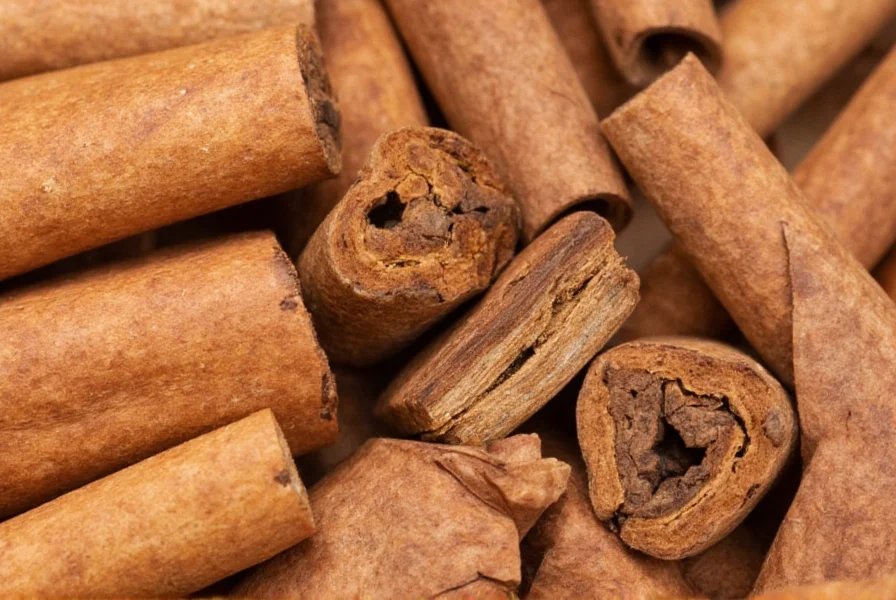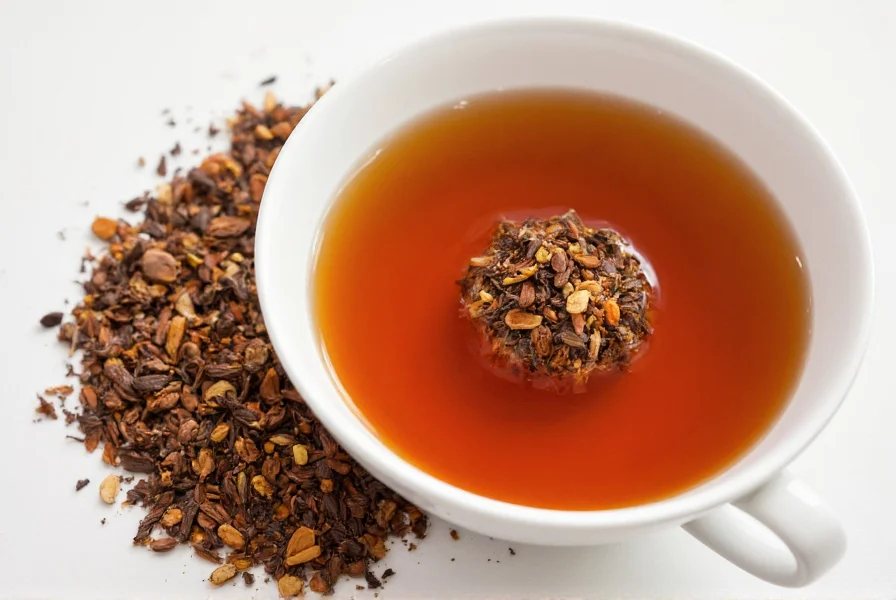Ceylon cinnamon tea represents a premium botanical beverage with unique properties that distinguish it from the more widely available Cassia cinnamon varieties. As the genuine cinnamon species (Cinnamomum verum), this Sri Lankan native offers distinctive health advantages due to its chemical composition. Understanding the ceylon cinnamon tea benefits versus potential limitations requires examining its scientific profile, preparation methods, and comparative advantages over other cinnamon types.
Understanding Ceylon Cinnamon: The True Cinnamon
Unlike the Cassia cinnamon that dominates supermarket shelves, Ceylon cinnamon (Cinnamomum verum, formerly Cinnamomum zeylanicum) grows primarily in Sri Lanka and southern India. Its distinctive characteristics include:
| Characteristic | Ceylon Cinnamon | Cassia Cinnamon |
|---|---|---|
| Bark Structure | Multiple thin, delicate layers (like newspaper scroll) | Single thick, hard layer |
| Coumarin Content | Approximately 0.017g/kg (very low) | Approximately 6.97g/kg (very high) |
| Flavor Profile | Subtly sweet, citrusy, complex | Intensely spicy, harsher |
| Color | Light tan to pale brown | Dark reddish-brown |
This structural difference directly impacts both flavor and safety considerations. The ceylon vs cassia cinnamon tea comparison reveals why Ceylon's lower coumarin content makes it preferable for regular consumption, particularly for individuals monitoring liver health.

Scientifically Supported Health Properties
Research indicates several potential health benefits associated with Ceylon cinnamon tea consumption, though important distinctions exist between preliminary findings and established medical treatments:
- Blood sugar regulation: Multiple studies, including a 2015 review in Nutrition Research Reviews, suggest cinnamon may improve insulin sensitivity. The ceylon cinnamon tea for blood sugar application shows promise, though effects appear modest and shouldn't replace diabetes medication.
- Antioxidant capacity: Ceylon cinnamon contains polyphenols with significant antioxidant activity, potentially reducing oxidative stress according to research published in Oxidative Medicine and Cellular Longevity.
- Anti-inflammatory effects: Laboratory studies indicate compounds in Ceylon cinnamon may reduce inflammation markers, though human clinical evidence remains limited.
It's crucial to note that most research uses concentrated cinnamon extracts rather than tea preparations. The ceylon cinnamon tea preparation method affects compound extraction, with longer steeping times (10-15 minutes) yielding more active constituents.
Safety Considerations and Usage Guidelines
While generally recognized as safe, understanding proper usage prevents potential issues:
- Coumarin content: Ceylon contains approximately 250 times less coumarin than Cassia varieties. The European Food Safety Authority recommends maximum daily coumarin intake of 0.1mg per kilogram of body weight. Ceylon's low levels make it suitable for regular consumption where Cassia would pose risks.
- Medication interactions: Cinnamon may interact with blood thinners, diabetes medications, and liver-metabolized drugs. Consult healthcare providers before regular consumption if taking prescription medications.
- Pregnancy considerations: While culinary amounts are generally safe, therapeutic doses lack sufficient safety data for pregnancy.
The ceylon cinnamon tea side effects are minimal when consumed in moderation (1-2 cups daily), though excessive consumption could potentially cause mouth irritation or digestive discomfort in sensitive individuals.
Preparing Authentic Ceylon Cinnamon Tea
Maximizing flavor and potential benefits requires proper preparation:
- Use whole Ceylon cinnamon quills rather than powder for superior flavor and controlled extraction
- Add 2-3 inches of quill to 8 ounces of just-boiled water
- Cover and steep for 10-15 minutes (longer steeping increases compound extraction)
- Remove quills and enjoy plain or with complementary flavors like lemon or cardamom
- For enhanced ceylon cinnamon tea benefits, add black pepper (piperine increases bioavailability)
Unlike Cassia-based preparations, authentic Ceylon cinnamon tea won't overpower other flavors, making it ideal for blending with herbal companions like ginger or tulsi.
Sourcing Authentic Ceylon Cinnamon
The where to buy authentic ceylon cinnamon question requires careful consideration due to widespread mislabeling:
- Look for "Cinnamomum verum" or "Cinnamomum zeylanicum" on packaging
- Verify Sri Lankan origin (approximately 80-90% of global production comes from Sri Lanka)
- Examine physical characteristics: thin, layered quills that crumble easily when bent
- Be wary of extremely low prices, which often indicate Cassia substitution
- Consider purchasing from specialty tea merchants with transparent sourcing practices
Authentic Ceylon cinnamon typically costs 2-3 times more than Cassia due to more labor-intensive harvesting methods and lower global production volume.
Conclusion: A Thoughtful Addition to Wellness Routines
Ceylon cinnamon tea offers a distinctive flavor profile and potentially valuable health properties when consumed as part of a balanced approach to wellness. Its significantly lower coumarin content compared to Cassia varieties makes it the preferred choice for regular consumption. While not a miracle cure, this genuine cinnamon variety represents a thoughtful addition to daily routines when sourced authentically and consumed mindfully. As with any botanical supplement, consult healthcare providers about incorporating Ceylon cinnamon tea into your regimen, particularly if managing health conditions or taking medications.
What makes Ceylon cinnamon tea different from regular cinnamon tea?
Ceylon cinnamon tea comes from Cinnamomum verum trees and features multiple thin bark layers, a delicate sweet-citrus flavor, and significantly lower coumarin content (about 0.017g/kg) compared to Cassia cinnamon (6.97g/kg). This makes Ceylon safer for regular consumption while offering a more complex flavor profile.
How much Ceylon cinnamon tea can I safely drink daily?
Most experts recommend 1-2 cups of properly prepared Ceylon cinnamon tea daily as a safe amount for healthy adults. This provides potential benefits while staying well below coumarin safety thresholds. Those with liver conditions or taking medications should consult healthcare providers before regular consumption.
Does Ceylon cinnamon tea help with blood sugar control?
Research suggests Ceylon cinnamon may improve insulin sensitivity and help moderate blood sugar spikes, though effects are generally modest. A 2013 study in the Journal of the Academy of Nutrition and Dietetics found cinnamon supplementation reduced fasting blood glucose by 10-29%. However, it should complement—not replace—standard diabetes management approaches.
How can I verify I'm buying authentic Ceylon cinnamon?
Check for Cinnamomum verum or Cinnamomum zeylanicum on the label, Sri Lankan origin (look for 'Ceylon' designation), thin layered quills that crumble when bent, and a lighter tan color. Authentic Ceylon typically costs 2-3 times more than Cassia. Reputable specialty tea merchants with transparent sourcing provide the most reliable options for genuine Ceylon cinnamon.
What's the best way to prepare Ceylon cinnamon tea for maximum benefits?
For optimal extraction, add 2-3 inches of whole Ceylon quills to 8 ounces of just-boiled water, cover, and steep for 10-15 minutes. Longer steeping increases compound extraction. Adding a pinch of black pepper enhances bioavailability of active compounds. Avoid boiling the quills directly, as this can degrade delicate compounds.
Frequently Asked Questions
What makes Ceylon cinnamon tea different from regular cinnamon tea?
Ceylon cinnamon tea comes from Cinnamomum verum trees and features multiple thin bark layers, a delicate sweet-citrus flavor, and significantly lower coumarin content (about 0.017g/kg) compared to Cassia cinnamon (6.97g/kg). This makes Ceylon safer for regular consumption while offering a more complex flavor profile.
How much Ceylon cinnamon tea can I safely drink daily?
Most experts recommend 1-2 cups of properly prepared Ceylon cinnamon tea daily as a safe amount for healthy adults. This provides potential benefits while staying well below coumarin safety thresholds. Those with liver conditions or taking medications should consult healthcare providers before regular consumption.
Does Ceylon cinnamon tea help with blood sugar control?
Research suggests Ceylon cinnamon may improve insulin sensitivity and help moderate blood sugar spikes, though effects are generally modest. A 2013 study in the Journal of the Academy of Nutrition and Dietetics found cinnamon supplementation reduced fasting blood glucose by 10-29%. However, it should complement—not replace—standard diabetes management approaches.
How can I verify I'm buying authentic Ceylon cinnamon?
Check for Cinnamomum verum or Cinnamomum zeylanicum on the label, Sri Lankan origin (look for 'Ceylon' designation), thin layered quills that crumble when bent, and a lighter tan color. Authentic Ceylon typically costs 2-3 times more than Cassia. Reputable specialty tea merchants with transparent sourcing provide the most reliable options for genuine Ceylon cinnamon.
What's the best way to prepare Ceylon cinnamon tea for maximum benefits?
For optimal extraction, add 2-3 inches of whole Ceylon quills to 8 ounces of just-boiled water, cover, and steep for 10-15 minutes. Longer steeping increases compound extraction. Adding a pinch of black pepper enhances bioavailability of active compounds. Avoid boiling the quills directly, as this can degrade delicate compounds.











 浙公网安备
33010002000092号
浙公网安备
33010002000092号 浙B2-20120091-4
浙B2-20120091-4